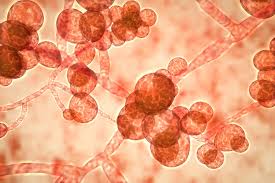
Unraveling Nasal Mycobiome Changes in COVID-19 and COVID-19 Associated Mucormycosis Patients
During India's second wave of the COVID-19 pandemic, there was a concerning rise in cases of Coronavirus Disease 2019 (COVID-19) associated mucormycosis (CAM), a condition known for its high mortality rate. To delve deeper into this phenomenon, a recent study set out to explore the fungal community composition in the nasopharyngeal region of CAM-infected individuals and compare it with severe COVID-19 patients and healthy controls.
Researchers from Delhi-AIIMS utilised metagenomic DNA from upper respiratory samples and analyzed the sequence homology of the internal transcribed spacer-2 (ITS-2) region to understand the fungal community makeup. The study revealed significant shifts in alpha-diversity indices among CAM patients, indicating an imbalance in the nasal mycobiome. Particularly noteworthy was the increased presence of certain fungal species like Candida africana, Candida haemuloni, Starmerella floris, and Starmerella lactiscondensi, exclusively observed in CAM patients and absent in severe COVID-19 patients or healthy controls.
Further analysis through beta-diversity confirmed distinct changes in mycobiome composition across the groups. The Bray-Curtis distance matrices showcased clear clustering of fungal communities among CAM patients, severe COVID-19 patients, and healthy controls, emphasizing the impact of these diseases on the nasal mycobiome.
Prior research has indicated that corticosteroids, a common treatment for severe COVID-19, can significantly alter the respiratory microbiome composition. Similarly, studies have noted shifts in the nasal mycobiome of COVID-19 patients, with an increase in opportunistic pathogens such as Cladosporium sp. and Alternaria sp.
This study offers valuable insights into the dysregulation of the nasal mycobiome during CAM infection, hinting at a series of changes in fungal flora that may contribute to CAM development. Further exploration is needed to uncover the underlying mechanisms and explore potential therapeutic interventions to mitigate the effects of CAM and severe COVID-19 on the nasal mycobiome.
These findings underscore the importance of understanding the fungal microbiome's role in respiratory diseases, paving the way for innovative strategies in disease management and prevention.